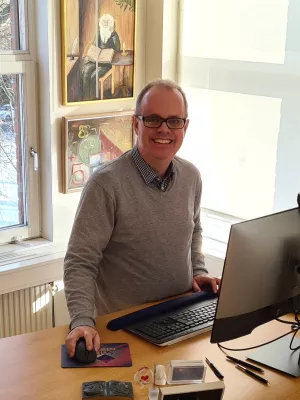
Håkan Carlsson
Överbibliotekarie

General User Surveys in Quality Development – Discovering Best Practices in Library Services
Författare
Summary, in English
Avdelning/ar
- Stab
Publiceringsår
2018-07-04
Språk
Engelska
Länkar
Dokumenttyp
Konferensbidrag: abstract
Ämne
- Information Studies
Nyckelord
- General user surveys
- Methods for library development
Conference name
LIBER Annual Conference 2018
Conference date
2018-07-04 - 2018-07-06
Conference place
Lille, France
Status
Published
Projekt
- Survey the Surveyors 2017

